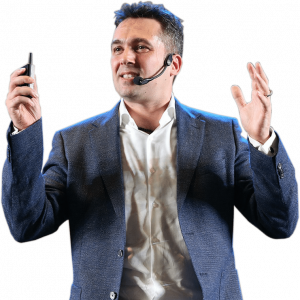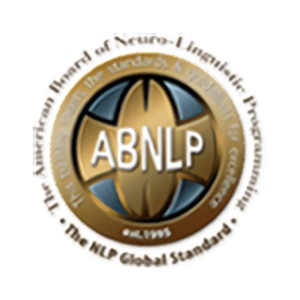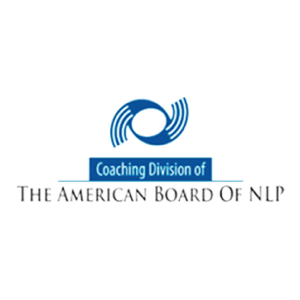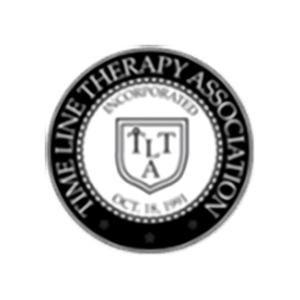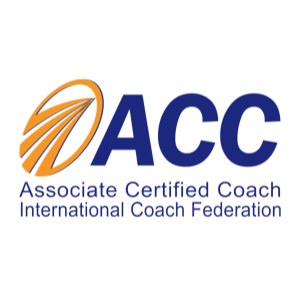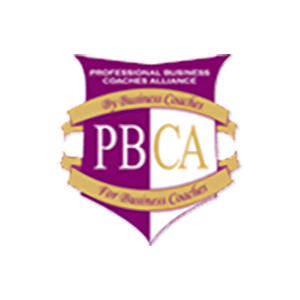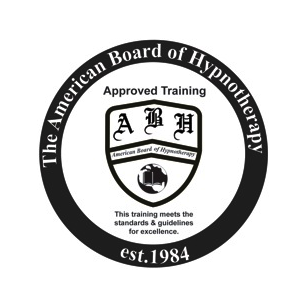If you’re involved in the coaching business, you always look for ways to enrich your clients’ experience. Learning about NLP and incorporating it into your coaching gives tremendous value to your work, making it more effective and influential.
So what is NLP? And how can you and your clients benefit from it?
What Is Neuro-Linguistic Programming (NLP)
Neuro-Linguistic Programming is the practice of using thoughts, language, and behavioral patterns to understand a person’s motives. This information is used in cultivating skills and treating unpleasant habits as well as some mental disorders.
The NLP psychological approach analyzes the habits, beliefs, thought processes, and choices of a person, and then compares them to those of a successful individual. It then gives you the tools to program your client’s minds to include these habits and replicate their success.
Neuro-Linguistic Programming is based on a scientific concept called “internal maps of reality,” which describes how the mind works. Let’s go over it in detail.
The Science Behind Neuro-Linguistic Programming
Our perception of the world is based on the interaction between our inner thoughts (neuro) and the language (linguistic) we use. They come together to create a map (programming) we use to navigate any situation that arises. This map guides how we think and act in future situations.
Through positive reinforcement, we tend to repeat actions that create a favorable outcome. However, some people repeat behaviors that have poor outcomes for reasons they don’t understand, mainly due to a faulty internal map.
Once you find out how the map came to be written in that way and change the parts that hinder progress, you can successfully eliminate certain bad behaviors.
History and Origins of Neuro-Linguistic Programming NLP
In the 1970s, John Grinder, a linguist, met and started working with Richard Bandler, a mathematician and information scientist. Together, they made conclusions based on the therapeutic techniques of prominent psychologists Virginia Satir, Milton Erickson, and Fritz Perls.
They released their notes in a 1975 book called The Structure of Magic I: A Book about Language and Therapy. It was a codification of the methods used by Satir and Perls in their therapy, which included using language to gather information about the client and change their perception. This is called the Meta-Model.
Milton Erickson’s work included the use of hypnotherapy to gain access to the client’s mind. It achieves its therapeutic purpose through indirect suggestion. This is called the Milton-Model.
How Neuro-Linguistic Programming Works
NLP works by going through several steps with the clients to gather as much information about them as possible. Then, you use this information to make interventions or propose certain changes you see they can benefit from.
This information isn’t limited to what they say out loud. Factors including their body language, tone, eye movement, and other non-verbal responses are significant in determining their true motives.
Then, with the help of questions from the Meta-Model, you can glean more information about their desires and goals. And with this information, you can help them look into their future and see the changes they want to create.
What Is NLP For?
The main purpose of NLP is to determine the thought and action patterns of a person and modify them to create positive changes in their life.
The use of non-verbal cues, like body language and eye movement, makes determining those patterns and modifying them easier.
Positive changes can happen through kicking bad habits like overeating, embracing new skills that help with productivity, or removing mental hindrances like anxiety and depression.
The advantage of NLP is that the practitioner has direct access to the client’s mind map, and so can help them change the parts they don’t like. This is done using the following four pillars.
The Four Pillars (Foundations) of Neuro-Linguistic Programming
NLP is based on four foundations that ensure successful therapy, and they are:
Establishing Rapport
Building rapport is being able to connect with someone else and gain their trust quickly. Using NLP non-verbal techniques will help you understand yourself better and feel at ease getting to know new people.
Sensory Awareness
Visual, auditory, olfactory, gustatory, and kinesthetic stimulation is how we experience the world around us. NLP helps define the world by using the terms you’re most comfortable with to describe it and express it.
Outcome Thinking
You’re always looking for the outcome of the actions you take, so thinking in these terms helps you define what works for you and what doesn’t. Getting stuck in a rut is avoidable if you’re looking for the results of your efforts.
Behavioral Flexibility
Learning how to do things differently to achieve your goals is the definition of flexibility. If your current behavioral patterns aren’t giving you the results you want, change is key. That’s what NLP is all about.
Examples of Neuro-Linguistic Programming Techniques
The techniques used by an NLP practitioner aim to achieve the aforementioned foundations. They engage the senses, thoughts, and language to describe the client’s personal map of reality.
Based on this description, the practitioner can make suggestions and help the client achieve the goal they set out to accomplish.
These techniques include:
Imagery Training
This is a fairly simple and straightforward NLP technique. Imagery training relies on the power of visualization and imagining, in detail, accomplishing a task you might find challenging. It aims to create confidence in your ability to get things done.
Think of giving a presentation in front of the head of your department or even getting a perfect strike when you’re out bowling with your friends. The key here is to focus on the steps you’re taking, your voice, your posture, and how you carry yourself. The greater the detail, the better.
Modeling
Modeling is at the core of NLP and is what it’s most famous for. It means taking a person you look up to as a role model and creating a blueprint out of their habits and behaviors.
The philosophy relies on reproducing a person’s success by repeating their steps to reach a similar outcome.
This role model doesn’t have to be a rich or famous person; it could be anyone who’s had an influence on you and whom you’d want to be more like.
It helps if you have several role models, so you can pick and choose which of their personality traits you want to include in your life.
Mirroring
Gaining someone’s trust isn’t an easy feat, but one thing people like is to relate to other people. Mirroring is a technique that can help you become more relatable.
You can accomplish that by adopting the vocabulary, body language, the tone someone is using, as well as the energy they have, whether high or more laid back.
Once the other person feels you’re similar to them, they’ll be more at ease talking to you. In turn, they’ll open up to you more, allowing you to understand them better. This is the effect mirroring has on people because we all want to feel there’s someone out there just like us.
Incantations
If you’ve ever heard of affirmations, this is the pumped-up version of that. Incantations are words you tell yourself to reaffirm your beliefs, convictions, and ideas about yourself. The words you use empower you by framing the things you want to believe about yourself and the world.
You can also engage your body in the process. Use your voice and your arms to power through the incantations. Repeat them often enough and they’ll echo in your mind during the times you need them most. Having incantations as a part of your morning ritual can do wonders for the rest of your day.
Leadership Impact of NLP
If you’re a leader in an organization, even if you run a team of two people, you can increase your circle of influence if you add Neuro-Linguistic Programming to your repertoire.
NLP inspires people to strive for more and not be satisfied with adequacy when there’s the possibility for excellence.
Being a charismatic, inspiring figure in your subordinates’ lives is achievable. You just need to allow yourself the space to try out different leadership techniques.
Your employees will trust you more, revere your vision, and seek your advice more readily. This will all reflect more positively on your work environment.
How To Become an NLP Trainer
If you want to adopt NLP as part of your coaching business, attending a comprehensive course that qualifies you in NLP is a must. Furthermore, you need to have the correct certification from a trusted source, that way your future clients can trust you with their lives and their wellbeing.
Here at NLP TOP Coach, we’re internationally approved and audited by The American Board of NLP (ABNLP), the world’s largest NLP authority. So you should rest assured you’re receiving the highest possible accreditation for your time and financial investment.
NLP Top Coach has several levels that train you to practice and teach NLP techniques, so here’s more about that.
Levels of NLP Training
In training to practice NLP, you go through multiple days of intensive seminars. These seminars teach you more about the theory, techniques, as well as real-life applications of Neuro-Linguistic Programming.
If you wish to reach the top level, you have to start from the first one to build up your knowledge and certification.
NLP Practitioner
This is the first and most basic level of NLP training. It doesn’t require any previous experience or background in NLP. However, coming in with an inquisitive mind and a desire to learn is always a plus and will help you go further in your training.
In the NLP Practitioner 4 In 1 Certification, you learn the essentials of NLP coaching, and how to have a better influence on your clients, employees, or family members.
By the end, you’ll have a deep understanding of how to apply NLP tools and techniques. This way you’ll create an extraordinary life in your career, business, wealth, health, relationships, and EQ.
NLP Master
This level of NLP training builds on what you learned in the NLP Practitioner course. In the NLP Master Practitioner 4 In 1 Training Certification, each technique is delivered through a process of theory, demonstration, hands-on practice, de-briefing, and Q&A.
You’ll also learn how to pinpoint and remove conflicting values and limiting beliefs in yourself as well as others.
So, whether you’re a business owner, entrepreneur, start-up leader, or executive, these advanced NLP tools and techniques are guaranteed to improve and positively affect your business growth.
NLP Trainer
NLP Train the Trainer Certification is the most advanced level of NLP training. After you receive your certification, you can in turn certify your students as NLP Practitioners and NLP Master Practitioners.
This training will help you develop world-class presentation skills. That way, you can engage your audience, influence decision-makers, and make a positive impact on everyone who listens to you.
As part of the course, you’ll learn what makes a successful coaching and training company. You’ll also learn how you can follow a proven step-by-step process to build your own business starting from scratch and grow it to a multi-million dollar level.
NLP Coach (NLP Master Trainer)
This training combines NLP techniques with life coaching. It’s the process of using NLP tools during coaching sessions to achieve better results with your clients.
You can start as a coach and then add NLP Practitioner or NLP Master status to your resume, or you can take the comprehensive NLP Master Trainer Certification course. This will greatly enrich the lives of your coaching clients and anyone who needs your help.
Types of NLP Training
NLP training has always been done in person, in a live group setting. This was thought to give the most value to the trainees, allowing them to interact and engage with one another.
However, in recent years, and due to current limitations, online training is booming and offering great value to attendees from all over the world.
That’s why you can attend any of our live seminars virtually in real-time, as well as enjoy a lifetime membership access to the courses you attended in the future.
Want To Learn NLP? Get Started Today
Are you interested in learning about NLP techniques and how to incorporate them? You can join Sebastien LeBlond at NLP Top Coach and receive your certification.


